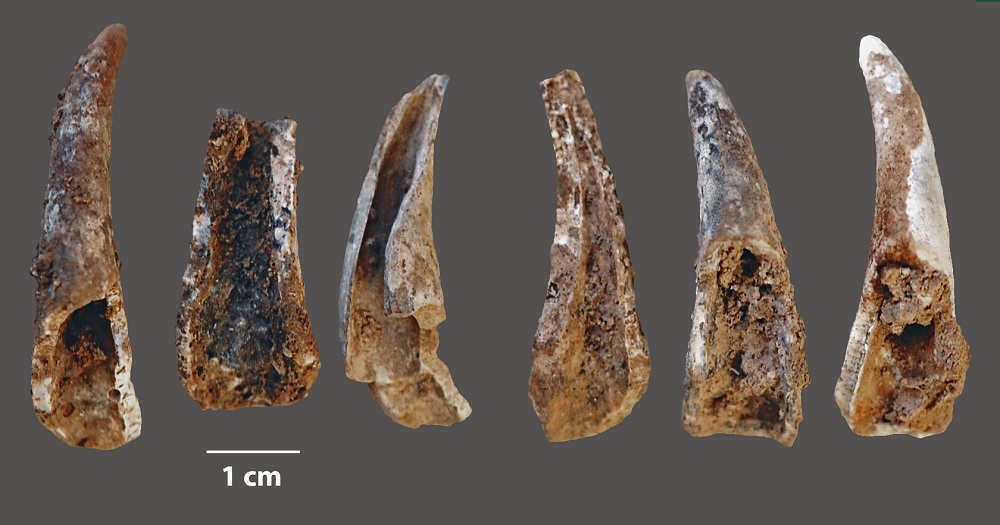A group of archaeologists explored the Neanderthal cave of Figueira Brava, located on the coast
Researchers found 635 shell piecescrabs, representing at least 33 individuals, as well as the remains of barnacles and sea urchins. The vast majority of crabs were the same types of large land crabs eaten by the modern Portuguese. Analysis of the bones showed that most of the specimens were larger than average, each yielding approximately 200 grams of crab meat.
There were no obvious signs on the shells that theyeaten by other animals, such as teeth marks or splinters from birds falling on rocks, the archaeologists note in their study. At the same time, the pattern of cracks says that they were opened solely in order to get meat. At the same time, traces of heat treatment were found on about 8% of the shells.
 Cracked and burned crab claws found in a cave. Image: Mariana Nabais, João Zilhão, Universitat de Barcelona
Cracked and burned crab claws found in a cave. Image: Mariana Nabais, João Zilhão, Universitat de Barcelona
The results of this study are additionalconfirmation that classical ideas about Neanderthals are wrong. For a long time it was believed that representatives of this species ate only carrion or hunted large prey. The ancestors of modern humans, by contrast, are thought to have eaten a more varied diet, including fish and seafood rich in fatty acids that promoted brain development.
However, finds show that about 90,000 years,Even before the first Homo sapiens moved to Europe, the inhabitants of the Figueira Brava cave already knew how to collect and cook crabs and used various seafood for food. This indicates more advanced cognitive abilities than previously thought, archaeologists believe.
Read more:
Scientists transplanted human “brain” into rats and told what happened in the end
Two photos of the Earth with a difference of 50 years were compared at NASA: what scientists found
Found a rare planet, very similar to the Earth. She is close to us
On the cover: Figueira Brava cave. Photo: João Zilhão, University of Göttingen